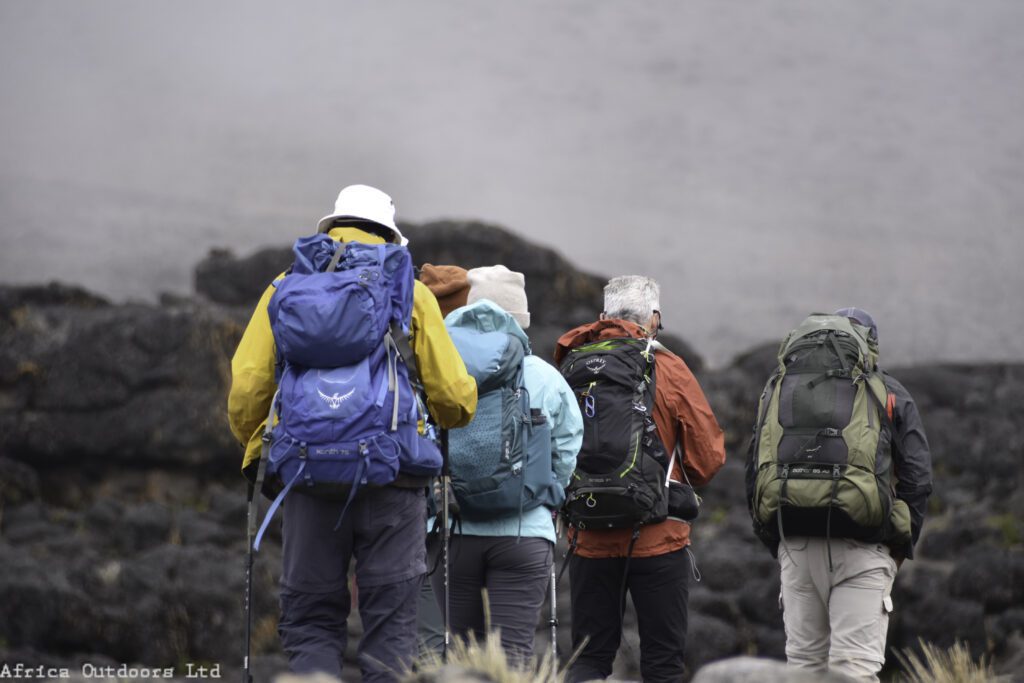Hiking Safely During the Rainy Season
Hiking in the rain. Taking a rainy day hike can offer solitude and a special ambiance, especially if you’re dressed to stay dry and warm. Below are tips for planning a rainy-day hike and staying safe while you’re on the trail.

CHOOSE YOUR HIKES WISELY
Pick trails suitable for the weather and avoid exposed ridge walks or hikes involving scrambling over slick rocks. Think old-growth forests.
CHECK THE WEATHER
There is no shortage of good online sources for mountain weather and road conditions.
For mountain forecasts, our favorite is the https://www.timeanddate.com/ website. It gives detailed forecasts for both mountain passes and actual hiking destinations and includes links to zone area forecasts for freezing/snow levels.
CHECK YOUR ACCESS ROADS
For road conditions, Call local guides on well-traveled routes. It is also wise to call ahead to the ranger station where you plan to hike or snowshoe to determine current conditions, especially the local roads where storms or fallen trees can shut off routes unexpectedly.
HIKING DURING OR AFTER A HEAVY RAIN
- When hiking during or after very heavy rains, it’s a good idea to take a little extra caution and watch your footing around any steep drainages, along hillsides, some shorelines and on snowfields. Drainages around recent fire activity can be particularly unstable to mud and debris flows.
- In winter, heavy rains could destabilize snow and increase avalanche danger. Be sure to check the mountains forecast pages
- Rivers can also swell unexpectedly, even late in the season, so make sure to carefully check with the rangers in the area.
- If you see a landslide across a trail, let your local ranger station know. You can also relevent authorities.
CLOTHING: WHAT DO YOU NEED?

You don’t need to buy a new wardrobe before you hit the trail, but you’ll need a few basics to stay safe and comfortable. You’ll probably get wet at some point while hiking in the rainy season, but using the tips below will help you stay warm and safe.
While you don’t need expensive or new gear to hike in the rain, avoid cotton when hiking in the rain: it’s a poor insulator when wet, making you feel colder and increasing your risk of hypothermia. Look for synthetic (like fleece) or wool materials instead, both of which are in abundance in thrift stores.
- Base layer: If you’re hiking in colder weather, this might long thermal underwear tops and/or bottoms.
- Warm, insulating layer: Do you have a fleece jacket? How about a comfy wool sweater? Both of these work great as an insulating layer that provides warmth if it gets chilly.
- Waterproof/windproof layer: This includes both rain/wind jackets and hiking or rain pants. The jacket will keep you warm and dry on windy ridges and rainy days, and the pants will keep you warm and protected from brush and mud.
- Socks: Hiking-specific socks offer more cushioning and breathability than cotton tube socks and protect them from blisters (particularly important on long hikes).
Recent Posts
Mount Kenya Charity walks
Mount Kenya Day Hike
Mount Kenya Challenge Program
All Categories
Tags

Thailand




